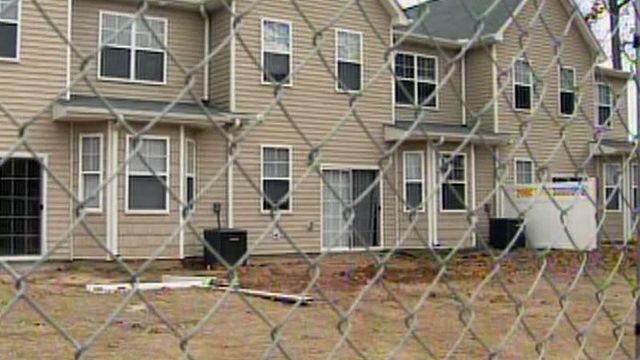Mother: Too soon to declare Bragg housing safe
A woman whose child was among the first of 10 unexplained infant deaths at Fort Bragg says the military is dismissing too quickly the possibility that on-post housing is linked to the deaths.
Posted — UpdatedThe children, ages 8 months to 2 years, have died in military housing at Fort Bragg since 2007, including one house where two infants died within three months.
On Tuesday, Fort Bragg officials said that extensive testing found nothing to indicate that the composition of the housing contributed to the deaths. Inspectors tested 10 homes on post for carbon monoxide, mercury vapor, mold, lead, asbestos and toxins in the drywall.
All of the tests were negative or were at levels well below the standard for human exposure set by the federal Occupational Safety and Health Administration, said Col. Stephen Sicinski, garrison commander at Fort Bragg. Those levels, however, are based upon adults.
"They can't necessarily say there's nothing wrong with these homes, that we know it's not the homes," Pearline Sculley said Thursday.
Sculley's 2-month-old son, Jaden, died in February 2007. He had had what seemed like a bad cold, but eventually was spitting up blood, she said.
"They just said it was (Sudden Infant Death Syndrome)," Sculley said of the cause of her son's death. "If the child's going to be taken away from me, don't give it to me."
She had moved into housing on post two years earlier. Two years after Jaden's death, two other babies died in the same house.
Sculley remains convinced that something toxic was in her home, and she worries that Fort Bragg might be covering up the problem.
"I don't think it's a coincidence that three babies (died) in the same house, and all the babies had the same symptoms before they died," she said. "I think that, if something was found, that it would be hidden. That wouldn't be something that would be out for the public to know about."
The military has ruled that one of the 10 children died of SIDS, but officials weren't able to determine the cause of death for the other nine.
The U.S. Consumer Product Safety Commission and the Army's Criminal Investigative Command are still looking into possible environmental problems in the military housing. Some of those test results are expected back until early next year.
• Credits
Copyright 2024 by Capitol Broadcasting Company. All rights reserved. This material may not be published, broadcast, rewritten or redistributed.






